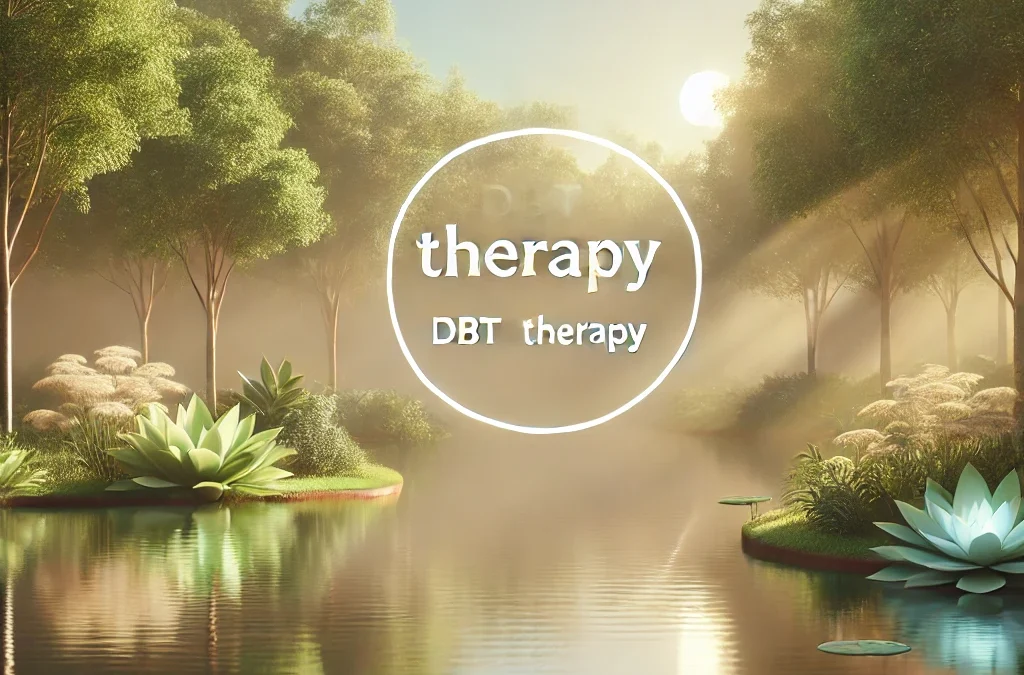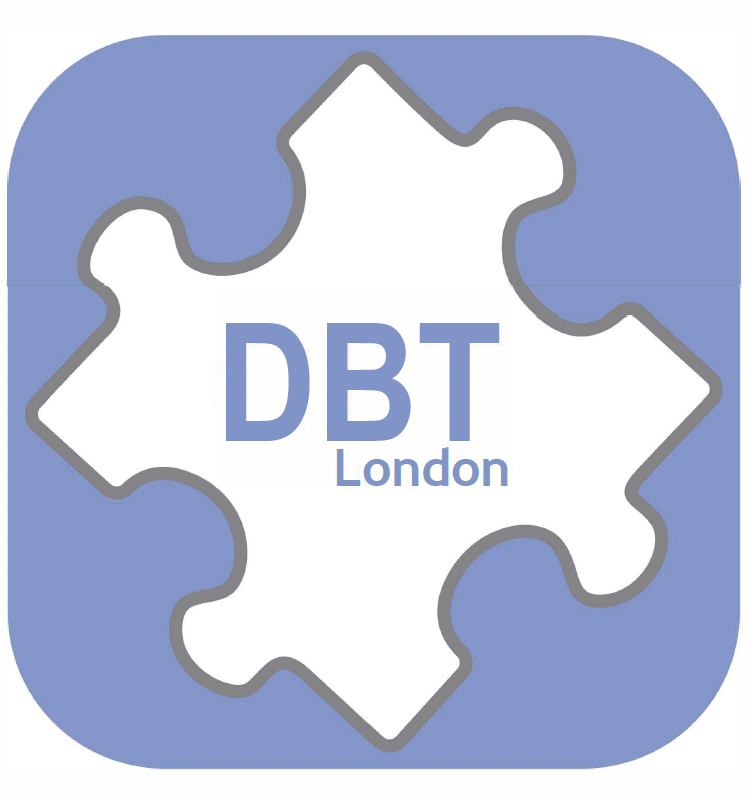
by terenceadmin | Jan 11, 2025 | DBT Therapy
Dialectical Behaviour Therapy (DBT) is a transformative approach that equips individuals with skills to manage intense emotions, navigate interpersonal challenges, and foster mental resilience. With the growing popularity of Online DBT, accessing these life-changing techniques has become more convenient than ever. Whether you’re new to DBT Therapy or looking to deepen your practice, these ten tips will help you make the most of your journey.
1. Embrace Mindfulness in Everyday Life
Mindfulness is the cornerstone of DBT Therapy. It involves being present in the moment without judgment. Start small by focusing on your breath or paying attention to your surroundings. Incorporating mindfulness into daily activities, such as eating or walking, can help ground you and reduce emotional reactivity.
Quick Tip: Set aside 5 minutes each morning for mindfulness meditation to set a positive tone for the day.
2. Build a Distress Tolerance Toolkit
Distress tolerance skills are essential for managing crisis situations without making them worse. Techniques like self-soothing, distraction, and radical acceptance can help you stay calm during challenging times.
Quick Tip: Create a list of activities or objects that bring you comfort, such as listening to music, taking a warm bath, or holding a favorite object.
3. Practice Emotion Regulation Daily
DBT Therapy emphasises understanding and managing emotions effectively. Identify your emotional triggers and work on strategies to prevent them from escalating. Journaling can be an excellent tool for tracking emotions and identifying patterns.
Quick Tip: Use an emotion wheel to help name and understand your feelings more accurately.
4. Strengthen Interpersonal Effectiveness Skills
Healthy relationships are key to emotional well-being. DBT Therapy provides tools for effective communication, such as the DEAR MAN skill (Describe, Express, Assert, Reinforce, Mindful, Appear Confident, Negotiate). Practice these techniques to set boundaries and express your needs clearly.
Quick Tip: Role-play difficult conversations with a trusted friend or therapist to build confidence.
5. Leverage the Flexibility of Online DBT
Online DBT offers the same robust skill-building as in-person sessions but with added convenience. Make the most of this format by ensuring you have a quiet, distraction-free space for sessions and reliable technology.
Quick Tip: Schedule Online DBT sessions at a time when you’re most focused and alert, such as mornings or early afternoons.
6. Engage Fully in Group Skills Training
Group skills training is a vital component of DBT Therapy, providing a supportive environment to learn and practice new techniques. Engaging with others facing similar challenges can foster a sense of community and accountability.

A diverse group of individuals attending an Online DBT group skills training session, highlighting the community and effectiveness of DBT Therapy for emotional well-being and growth.
Quick Tip: Actively participate in discussions and share your experiences during group sessions to maximize your learning.
7. Utilise Phone Coaching Wisely
Phone coaching is a unique feature of DBT Therapy that provides real-time guidance for applying skills in everyday life. Use this resource sparingly and strategically to navigate challenging moments.
Quick Tip: Keep a list of specific questions or scenarios you’d like to discuss during phone coaching to make the most of the session.
8. Prioritise Homework Assignments
DBT Therapy often includes homework assignments to reinforce skills learned in sessions. Treat these assignments as an integral part of your growth and make time to complete them thoughtfully.
Quick Tip: Set a specific time each day to review and work on your DBT homework, such as after dinner or before bed.
9. Celebrate Small Wins
Progress in DBT Therapy often happens gradually. Recognising and celebrating small achievements, like using a distress tolerance skill during a tough moment, can boost motivation and confidence.
Quick Tip: Keep a gratitude or success journal to track and celebrate your accomplishments, no matter how small.
10. Stay Consistent with Your Practice
Consistency is key to reaping the full benefits of DBT Therapy. Commit to regular sessions, practice skills daily, and stay engaged in the process, whether in-person or through Online DBT.
Quick Tip: Set reminders on your phone or calendar to practice mindfulness, review DBT skills, or attend therapy sessions.
The Role of Online DBT in Modern Mental Health Care
The advent of Online DBT has made accessing high-quality mental health care easier and more inclusive. With the flexibility of virtual sessions, individuals can prioritise their emotional well-being without disrupting their daily routines. Whether you’re seeking to manage overwhelming emotions, improve relationships, or build resilience, Online DBT offers a structured and effective path forward.
Final Thoughts: Empower Yourself with DBT Therapy
DBT Therapy is more than just a treatment; it’s a toolkit for living a balanced and fulfilling life. By incorporating these ten tips into your practice, you can enhance your skills, deepen your self-awareness, and create lasting change. Whether you’re working with a therapist in person or exploring the possibilities of Online DBT, your commitment to personal growth is the most crucial step.
Start your journey today and discover the transformative power of DBT Therapy in building emotional resilience and improving your quality of life.

by terenceadmin | Nov 18, 2024 | DBT Therapy
DBT Therapy (Dialectical Behavior Therapy) has gained widespread recognition for its effectiveness in addressing a range of mental health challenges, including
borderline personality disorder (BPD), emotional dysregulation, and more. Whether you’re exploring
DBT therapy online or attending in-person sessions, understanding its core principles can enhance your therapeutic experience. In this post, we’ll share five top tips to help you make the most of DBT therapy and explore how online therapy can fit seamlessly into your mental health journey.
1. Understand the Core Components of DBT Therapy
DBT therapy is built around four core components: mindfulness, distress tolerance, emotion regulation, and interpersonal effectiveness. Each of these skills is designed to address specific challenges:
- Mindfulness helps you stay present and aware, even in emotionally charged situations.
- Distress Tolerance equips you with tools to manage crises without making the situation worse.
- Emotion Regulation teaches you to identify, understand, and manage your emotions effectively.
- Interpersonal Effectiveness helps you navigate relationships, assert your needs, and maintain boundaries.
Before starting DBT therapy, familiarize yourself with these components. If you’re engaging with DBT therapy online, many programs provide resources or introductory modules to help you understand these skills before diving into sessions.
2. Practice Skills Consistently
Consistency is key when it comes to mastering DBT skills. The strategies taught in DBT therapy require regular practice to become second nature. For instance:
- Start your day with a brief mindfulness exercise, such as deep breathing or a body scan.
- Use emotion regulation skills, like opposite action, when faced with difficult emotions.
- Keep a journal to track your progress with interpersonal effectiveness and note what works.
Online DBT platforms often include practice assignments, worksheets, and digital reminders to help you stay on track. By integrating these tools into your routine, you can build confidence and see tangible results.

Achieve mindfulness and emotional balance with these expert tips for DBT therapy and DBT online.”
3. Leverage the Benefits of DBT Online
The rise of DBT therapy online has made this evidence-based approach more accessible than ever. Online therapy offers several advantages:
- Convenience: Attend sessions from the comfort of your home, saving time and reducing stress.
- Flexibility: Online platforms often offer a range of session times, making it easier to fit therapy into your schedule.
- Privacy: Virtual therapy ensures discretion, especially if you’re hesitant about attending in-person sessions.
Many online DBT programs are designed to be as interactive as face-to-face therapy. They may include group sessions, one-on-one consultations, and access to digital tools that help you track your progress. Explore your options to find a platform that suits your needs and preferences.
4. Set Realistic Goals for Progress
DBT therapy is a journey, not a quick fix. It’s important to set realistic and measurable goals for your progress. These goals might include:
- Reducing the frequency or intensity of emotional outbursts.
- Improving communication with loved ones.
- Developing healthier coping mechanisms for stress.
Discuss your goals with your therapist at the outset of your therapy. If you’re participating in DBT therapy online, many platforms provide goal-setting tools and progress trackers. Remember, small, consistent steps can lead to significant improvements over time.
5. Engage Actively in Group Sessions
Group therapy is a vital component of DBT therapy. It provides a supportive environment where you can learn from others and practice DBT skills in real-time. If you’re participating in DBT therapy online, group sessions are often conducted via video conferencing, making it easy to connect with others from diverse backgrounds.
Here are some tips for making the most of group sessions:
- Be open to sharing your experiences while respecting the privacy of others.
- Actively participate in role-plays and exercises.
- Take notes during sessions and review them afterward to reinforce your learning.
Group therapy not only enhances your understanding of DBT skills but also provides a sense of community and shared purpose.
Why DBT Therapy is Life-Changing
DBT therapy empowers individuals to take control of their emotional well-being and lead more fulfilling lives. Whether you’re attending sessions in person or opting for the flexibility of DBT therapy online, the key to success lies in commitment, practice, and a willingness to embrace change. By following these five tips, you can maximize the benefits of DBT therapy and build a foundation for lasting mental health improvements.
If you’re considering starting DBT therapy or exploring online options, take the first step today. Many qualified therapists and platforms specialize in delivering this transformative approach. With patience and effort, you’ll find the tools you need to thrive.
Looking for DBT Therapy Online?
At DBT London, we offer expert-led online DBT therapy designed to fit your lifestyle. Our comprehensive programs provide the support, skills, and flexibility you need to succeed. Contact us today to learn more about how DBT therapy can help you or your loved ones.

by terenceadmin | Nov 5, 2024 | DBT Therapy
Introduction
Anxiety can feel like a constant weight, impacting daily activities and relationships. Dialectical Behavior Therapy (DBT), originally developed to treat borderline personality disorder, has evolved to help people manage various emotional challenges, including anxiety. Using practical tools and techniques, DBT therapy can guide you toward managing anxious thoughts, gaining emotional stability, and living more fully. Whether you’re working with a therapist in person or exploring DBT online, these ten DBT strategies can help you start reducing anxiety today.
1. Mindfulness Skills for Grounding
Mindfulness, a cornerstone of DBT therapy, can be a powerful tool for managing anxiety. Practicing mindfulness helps you focus on the present moment rather than getting lost in anxious thoughts about the future or the past. Try a simple exercise: close your eyes, breathe deeply, and pay attention to the sensations of your body. Notice the feeling of your feet on the ground, your breath, and sounds around you. Practicing mindfulness can keep you grounded and prevent spiraling into worry.
Pro Tip: Explore guided mindfulness practices available through DBT Online platforms, which often include beginner-friendly sessions.
2. Opposite Action for Fear and Avoidance
When anxiety pushes you to avoid certain situations, opposite action can help. This technique encourages you to “do the opposite” of what your anxiety tells you. For example, if social anxiety makes you want to cancel plans, try attending even if it feels uncomfortable. Engaging in opposite action can slowly reduce anxiety’s hold over you, helping you regain control.
How to Practice: Begin with small steps and gradually work up to more challenging situations. Start by saying “hello” to a stranger or making a brief phone call.

3. Emotion Regulation for Anxiety Control
DBT teaches emotion regulation skills, which help you understand and manage your emotional responses. Recognizing that anxiety is a natural reaction can be empowering. Identifying the underlying feelings—such as fear, insecurity, or shame—can also help you find healthier responses.
Practice Tip: Keeping an “emotion journal” can make it easier to track your feelings, identify patterns, and understand what triggers your anxiety.
4. Using ‘Check the Facts’ to Reduce Catastrophic Thinking
Catastrophic thinking, or expecting the worst, can fuel anxiety. “Check the Facts” is a DBT skill that encourages you to assess whether your fears are based on evidence or assumptions. For example, if you’re anxious about a meeting, ask yourself if there’s concrete evidence that it will go badly. Often, recognizing that fears aren’t rooted in reality can ease anxiety.
Try This: Write down your anxious thoughts, then look for objective evidence for and against each one.
5. TIPP Skills for Quick Anxiety Relief
TIPP stands for Temperature, Intense exercise, Paced breathing, and Progressive relaxation. These are all ways to calm the body quickly when anxiety becomes overwhelming. Applying cold to your face (Temperature), for instance, can activate the body’s dive response, reducing your heart rate and creating an instant calming effect.
Example: If you’re feeling anxious, try holding a cold pack against your forehead or splashing cold water on your face.
6. Self-Soothing with the 5 Senses
Anxiety often comes with physical discomfort, making self-soothing an effective DBT therapy tool. This skill encourages you to use each of your senses—sight, smell, taste, touch, and sound—to create a calming experience. For example, listening to calming music, lighting a scented candle, or savoring a favorite tea can provide comfort during anxious moments.
Practical Tip: Create a “self-soothing kit” with items that comfort you, such as a cozy blanket, a favorite snack, or essential oils. This can be a great resource to turn to when anxiety strikes.
7. Radical Acceptance to Let Go of Control
A major cause of anxiety is the urge to control things we cannot change. Radical Acceptance is about letting go of the struggle and accepting life as it is. This doesn’t mean you approve of difficult situations; rather, it means you stop fighting against reality. By practicing Radical Acceptance, you free yourself from the mental energy spent on “what-ifs” and focus on coping in the present moment.
Practice Radical Acceptance: Repeat a mantra, such as “I cannot control everything, and that’s okay,” when feeling anxious about things outside your control.
8. Distract with ‘Wise Mind ACCEPTS’
DBT Online programs often emphasize “Wise Mind ACCEPTS,” a skill to distract you from intense emotions until you feel more balanced. ACCEPTS stands for Activities, Contributing, Comparisons, Emotions, Pushing away, Thoughts, and Sensations. Each represents a way to shift focus when anxiety is high. For instance, engaging in a hobby, helping someone else, or imagining a peaceful place can redirect your mind.
Try This: When anxiety peaks, try calling a friend, practicing a hobby, or volunteering—shifting your focus can make a significant difference.
9. Interpersonal Effectiveness to Set Boundaries
Setting boundaries can reduce social anxiety and stress. Interpersonal effectiveness, a core DBT therapy skill, helps you assert your needs calmly and clearly. When you set healthy boundaries, you reduce anxiety by creating predictable interactions and maintaining relationships that respect your needs.
Example: If someone’s behavior causes you anxiety, use DBT’s “DEAR MAN” method to assertively communicate your feelings and boundaries.
10. Finding Support Through DBT Online
While practicing DBT skills independently is valuable, working with a therapist can enhance your progress. Many DBT Online programs offer guided support for anxiety and other emotional challenges. DBT Online provides a safe space to learn these techniques in depth with a trained therapist’s support, helping you stay accountable and motivated as you work through anxiety.
Take the First Step: If you’re new to DBT, consider joining a DBT Online program where you can access structured sessions, supportive communities, and tailored tools to manage anxiety.
Conclusion
DBT therapy is a practical approach for those struggling with anxiety, offering concrete tools for emotional management. Whether practicing mindfulness, using self-soothing techniques, or working with a DBT therapist online, each skill provides an opportunity to manage and reduce anxious thoughts. Anxiety doesn’t have to control your life. With DBT therapy and a commitment to practice, you can take steps toward peace, grounding, and resilience.
By incorporating these tips into your routine—whether through DBT Online or self-guided practice—you’ll be well on your way to managing anxiety and embracing a healthier, more balanced life.
Closing Note: Interested in learning more about DBT therapy? Explore DBT Online options for accessible, therapist-guided support on your journey to managing anxiety.

by terenceadmin | Oct 8, 2024 | DBT Therapy
In today’s fast-paced world, many people struggle with emotional dysregulation, destructive behaviors, and interpersonal difficulties. Dialectical Behavior Therapy, commonly known as DBT Therapy, has emerged as a proven method for addressing these challenges. In this article, we’ll explore what DBT Therapy is, who it can help, and how you can find a qualified DBT therapist or access DBT online from the comfort of your home.
What is DBT Therapy?
Dialectical Behavior Therapy (DBT) is a type of cognitive-behavioral therapy (CBT) designed to help individuals manage intense emotions, improve relationships, and reduce self-destructive behaviors. Originally developed by Dr. Marsha Linehan in the late 1980s for people with borderline personality disorder (BPD), DBT has since been adapted to treat a range of mental health issues, including:
- Depression
- Anxiety disorders
- Post-Traumatic Stress Disorder (PTSD)
- Substance abuse
- Eating disorders
One of the unique aspects of DBT Therapy is its combination of acceptance and change-oriented strategies. The approach teaches clients to accept their emotions and experiences while also working towards meaningful change. Through this, clients gain skills to lead more balanced, mindful lives.
The Four Components of DBT Therapy
DBT Therapy consists of four main components, each focusing on different skills:
- Mindfulness: Mindfulness is the foundation of DBT Therapy. It teaches individuals to be present in the moment, helping them become aware of their thoughts, emotions, and behaviors without judgment. This practice enhances self-awareness and reduces impulsive reactions.
- Distress Tolerance: When emotions run high, it’s easy to turn to harmful behaviors such as substance abuse or self-harm. Distress tolerance skills focus on building healthy coping mechanisms to manage difficult situations without escalating emotional responses.
- Emotion Regulation: Managing emotions effectively is a crucial goal of DBT Therapy. This component helps individuals understand their emotional responses and teaches strategies to reduce vulnerability to emotional overload.
- Interpersonal Effectiveness: This module of DBT Therapy focuses on improving communication and relationship skills. It helps individuals maintain healthy boundaries, ask for what they need, and assertively say no when necessary, all while preserving self-respect and relationships.
Who Can Benefit from DBT Therapy?
DBT Therapy is particularly effective for individuals who struggle with intense emotional experiences, self-harm, and unstable relationships. While originally developed for individuals with borderline personality disorder, its effectiveness has expanded to various mental health conditions.
If you experience:
- Chronic emotional instability
- Difficulty controlling anger or sadness
- Patterns of self-harm or suicidal thoughts
- Problematic relationships due to emotional outbursts
- Substance abuse as a way of coping with overwhelming emotions
You may benefit greatly from DBT Therapy. A certified DBT therapist can work with you to build a treatment plan tailored to your specific needs.

Finding a Qualified DBT Therapist
When seeking a DBT therapist, it’s important to ensure they have the proper training and certification in Dialectical Behavior Therapy. While many therapists practice CBT, DBT Therapy requires specialized training in its specific modules and approach.
Here are a few tips to help you find a qualified DBT therapist:
- Certification: Check whether the therapist is certified in DBT Therapy. Certification ensures that they have undergone the necessary training and have experience working with DBT-specific interventions.
- Experience: Ask about their experience working with clients who have similar challenges. DBT is particularly effective for individuals with BPD, but it is also used to treat other conditions like eating disorders and substance abuse. Make sure your therapist has experience working with your specific condition.
- Group Therapy: A key component of DBT is group skills training, where clients learn and practice DBT skills in a supportive environment. Ask your DBT therapist if they offer group sessions as part of their treatment plan.
- Online Options: In today’s digital world, finding a DBT therapist online has become easier and more accessible than ever before.
Why Choose DBT Online?
Many people find it difficult to attend therapy in person due to logistical reasons such as time constraints, geographical limitations, or health concerns. Fortunately, DBT online offers a solution. Online therapy provides the same structure and benefits of in-person DBT Therapy, allowing you to access treatment from anywhere.
Here are the benefits of choosing DBT online:
- Convenience: Attending DBT online means you can receive therapy from the comfort of your home, eliminating the need for commuting and allowing more flexibility in scheduling.
- Accessibility: If you live in a remote area or far from a qualified DBT therapist, DBT online offers a way to receive treatment that might otherwise be unavailable.
- Anonymity and Comfort: Some people find it easier to open up in the familiar environment of their own home. DBT online allows you to participate in therapy while feeling more relaxed.
- Continuity of Care: Whether you’re traveling or relocating, DBT online ensures that you can continue your therapy without interruption. This continuity is especially important in DBT, where consistent practice of skills is key to success.
How to Choose the Right DBT Online Program
When selecting a DBT online program, keep the following in mind:
- Licensed therapists: Ensure that the DBT therapist conducting online sessions is licensed and experienced in providing DBT Therapy.
- Structure: A well-organized DBT online program should include individual sessions and group skills training, just like in-person therapy. Look for programs that offer a structured, comprehensive approach.
- Platform and security: Make sure the online therapy platform is secure and HIPAA-compliant to protect your privacy and confidentiality.
Final Thoughts on DBT Therapy
DBT Therapy has transformed the lives of countless individuals by providing practical tools for managing emotions, improving relationships, and reducing harmful behaviors. Whether you’re looking for an in-person DBT therapist or considering the flexibility of DBT online, this therapeutic approach can be a powerful resource in your mental health journey.
By working with a skilled DBT therapist, you can gain the skills needed to navigate life’s challenges with more balance, resilience, and peace. And with the increasing availability of DBT online, access to effective therapy has never been easier.
If you or a loved one is struggling with emotional instability, destructive behaviors, or difficult relationships, consider exploring the transformative power of DBT. Start your search for a qualified DBT therapist today, and take the first step towards a more mindful, empowered life.

by terenceadmin | Sep 23, 2024 | DBT Therapy
In recent years, Dialectical Behaviour Therapy (DBT) has gained significant recognition as an effective treatment for various mental health conditions, including borderline personality disorder (BPD), depression, anxiety, and post-traumatic stress disorder (PTSD). With the advent of technology, accessing DBT therapy has become more convenient than ever, thanks to the availability of DBT online services. In this blog post, we will explore what DBT is, how it works, and the benefits of engaging in DBT therapy online.
What is DBT Therapy?
Dialectical Behaviour Therapy (DBT) was developed by psychologist Marsha Linehan in the late 1980s as a treatment for individuals struggling with extreme emotional responses, particularly those with Borderline Personality Disorder (BPD). It is a form of cognitive-behavioural therapy (CBT) that emphasizes the importance of managing emotions, improving interpersonal relationships, and fostering mindfulness.
DBT is unique in that it combines traditional cognitive-behavioural techniques for emotion regulation and reality testing with concepts derived from Eastern meditative practices, such as mindfulness and acceptance. As a result, DBT aims to help people balance the opposing forces of acceptance and change—encouraging clients to accept their current situation while simultaneously working toward positive change.
The Four Core Components of DBT Therapy
DBT therapy is typically broken down into four main components, which work together to create a comprehensive treatment plan:
- Mindfulness: Mindfulness is at the core of DBT therapy and focuses on helping individuals become more aware of the present moment without judgment. Through mindfulness practices, clients can learn to observe their thoughts and emotions without being overwhelmed by them.
- Distress Tolerance: This component teaches clients how to tolerate pain and discomfort in difficult situations, rather than reacting impulsively or engaging in self-destructive behaviours. By developing distress tolerance, individuals can manage crises more effectively.
- Emotion Regulation: DBT helps clients identify, understand, and manage their emotional responses. By learning to regulate emotions, individuals can reduce the intensity of negative emotions, leading to more balanced emotional experiences.
- Interpersonal Effectiveness: DBT therapy also focuses on building healthy and effective communication skills. Clients learn to navigate relationships with others in a way that maximizes their ability to achieve their goals, while also maintaining self-respect and healthy boundaries.
Who Can Benefit from DBT Therapy?
While DBT therapy was originally designed for individuals with Borderline Personality Disorder, it has been adapted to help treat a wide range of mental health conditions. Some of the conditions that can benefit from DBT include:
- Borderline Personality Disorder (BPD): DBT is highly effective in helping individuals with BPD manage their intense emotions, improve relationships, and reduce self-destructive behaviours.
- Depression: DBT helps individuals develop coping mechanisms for managing depressive episodes, building resilience, and fostering emotional balance.
- Anxiety Disorders: For those struggling with anxiety, DBT provides tools to regulate emotions and manage anxiety-provoking situations without becoming overwhelmed.
- Substance Use Disorders: DBT therapy can help individuals with substance use disorders learn healthier ways to cope with emotional distress and break the cycle of addiction.
- Post-Traumatic Stress Disorder (PTSD): DBT’s focus on mindfulness and emotion regulation makes it a valuable tool in managing the emotional responses triggered by trauma.

The Benefits of DBT Online
With the growth of telehealth services, DBT online has become a popular option for individuals seeking mental health treatment. Here are some of the key benefits of engaging in DBT therapy online:
1. Accessibility and Convenience
One of the most significant advantages of DBT online is the ease of access. Traditional in-person therapy can be challenging to fit into busy schedules or for those living in remote areas with limited access to mental health services. DBT online removes these barriers, allowing clients to attend therapy sessions from the comfort of their own home. Whether you live in a busy city or a rural area, DBT online provides a flexible option to receive professional support without the need to commute or rearrange your daily routine.
2. Anonymity and Comfort
For some individuals, attending therapy in person can feel intimidating, especially in the early stages of treatment. With DBT online, clients have the opportunity to engage in therapy from a familiar and private environment. This can help reduce feelings of vulnerability, making it easier for individuals to open up and engage fully in the therapeutic process.
3. Continuity of Care
The flexibility of DBT online also ensures that clients can maintain continuity of care. Life events, such as travel, relocation, or illness, can interrupt traditional in-person therapy. However, DBT online allows clients to continue attending sessions no matter where they are, ensuring that their progress isn’t interrupted. This continuity is especially important for individuals managing chronic mental health conditions.
4. Group Therapy Options
Many DBT therapy programs include both individual therapy and group skills training sessions. DBT online allows clients to participate in group therapy sessions with others who are experiencing similar challenges. Group therapy offers a supportive environment for individuals to learn and practice DBT skills, fostering a sense of community and shared understanding. These online group sessions are just as effective as in-person ones, with the added benefit of convenience.
5. Evidence-Based and Structured
Just like in-person DBT, DBT online follows a structured, evidence-based approach to treatment. Clients engage in a combination of individual therapy, group therapy, and homework assignments designed to reinforce the skills learned during sessions. Online platforms often provide additional resources, such as recorded mindfulness exercises or digital workbooks, to support clients between sessions.
How to Get Started with DBT Online
If you’re considering starting DBT therapy, whether in person or through DBT online, it’s essential to find a qualified therapist who is trained in DBT. Look for a therapist with experience in treating the specific challenges you’re facing, whether that’s BPD, anxiety, or depression.
At DBT London, we offer DBT online services for individuals seeking flexible and effective mental health treatment. Our team of trained therapists works with clients to build essential DBT skills, providing a supportive environment for personal growth and emotional healing.
Getting started with DBT online is simple. After an initial consultation to assess your needs, your therapist will develop a tailored treatment plan that includes weekly sessions, skills training, and access to online resources. Whether you’re dealing with emotional instability, anxiety, or relationship difficulties, DBT online can provide you with the tools you need to achieve emotional balance and improve your quality of life.
Final Thoughts
DBT therapy is a powerful tool for individuals seeking to improve their mental health and emotional well-being. With the availability of DBT online, accessing high-quality therapy has never been easier. Whether you’re looking to manage overwhelming emotions, improve your relationships, or build resilience in the face of adversity, DBT therapy can help. By working with a trained DBT therapist, either in person or online, you can begin the journey towards a healthier and more balanced life.
If you’re interested in learning more about DBT therapy or exploring the benefits of DBT online, contact DBT London today to schedule a consultation. Our experienced team is here to support you on your path to emotional wellness.

by terenceadmin | Sep 1, 2024 | DBT Therapy
In today’s fast-paced world, mental health challenges are more prevalent than ever, making effective and accessible treatment options essential. Dialectical Behavior Therapy (DBT) has emerged as a powerful tool for those struggling with emotional regulation, interpersonal conflicts, and various mental health disorders. With the rise of telehealth, Online DBT has become an increasingly popular choice for individuals seeking help from the comfort of their homes. In this article, we’ll explore what Online DBT is, how it works, and why it might be the right choice for you or a loved one.
What is DBT?
Dialectical Behavior Therapy, or DBT, is a form of cognitive-behavioral therapy (CBT) originally developed by Dr. Marsha Linehan in the late 1980s. It was initially created to treat Borderline Personality Disorder (BPD), but over the years, its applications have expanded to a wide range of mental health issues, including anxiety, depression, eating disorders, and substance abuse.
DBT is unique in its combination of acceptance and change strategies. It is structured around four key modules:
- Mindfulness: Focusing on the present moment, recognizing and accepting thoughts and feelings without judgment.
- Distress Tolerance: Building the ability to tolerate and survive crises without making them worse.
- Emotion Regulation: Understanding and managing intense emotions that can lead to problematic behaviors.
- Interpersonal Effectiveness: Learning assertive communication skills to maintain healthy relationships while respecting others and oneself.

The Rise of Online DBT
As technology has advanced, so too has the way we approach mental health treatment. Online DBT offers the same evidence-based therapy techniques as traditional in-person DBT but with added flexibility and accessibility. It’s delivered through secure video conferencing, often supplemented by digital tools like apps, worksheets, and messaging platforms.
The COVID-19 pandemic accelerated the adoption of telehealth services, including Online DBT. People who may have been hesitant to seek therapy in person found comfort in the privacy and convenience of online sessions. But beyond just pandemic-related needs, Online DBT offers lasting benefits that make it an appealing option for many.
How Does Online DBT Work?
Online DBT follows the same structure as in-person DBT, but it’s tailored to fit the virtual environment. Here’s a breakdown of what you can expect when engaging in Online DBT:
1. Initial Assessment:
Before beginning Online DBT, you’ll typically undergo an initial assessment with a licensed DBT therapist. This assessment helps determine if DBT is the right fit for your needs and allows the therapist to understand your unique challenges. The assessment is usually conducted via a video call, where you can discuss your history, symptoms, and goals.
2. Individual Therapy Sessions:
Online DBT typically involves weekly individual therapy sessions conducted through video conferencing. These sessions focus on skill-building and applying DBT techniques to real-life situations. Your therapist will guide you through the four DBT modules, helping you develop mindfulness, distress tolerance, emotion regulation, and interpersonal effectiveness.
3. Group Therapy:
In addition to individual sessions, Online DBT often includes group therapy. These sessions allow you to practice DBT skills in a supportive environment alongside others who are working through similar challenges. Group therapy sessions are also held online, offering a space for shared experiences and mutual support.
4. Homework Assignments:
A crucial part of DBT is the application of skills learned during therapy to everyday life. This is often done through homework assignments. In Online DBT, these assignments may be shared digitally, with your therapist providing feedback via secure messaging platforms. Homework can include practicing mindfulness exercises, completing emotion regulation worksheets, or reflecting on interpersonal interactions.
5. Ongoing Support:
One of the advantages of Online DBT is the ability to receive ongoing support between sessions. Many online platforms offer secure messaging, where you can reach out to your therapist with questions or updates. This continuous support helps you stay on track and feel connected to your therapeutic journey, even outside of scheduled sessions.
Why Choose Online DBT?
Online DBT offers several advantages that make it an appealing option for many individuals seeking mental health treatment. Here are some of the key benefits:
1. Accessibility:
Online DBT removes geographical barriers, making therapy accessible to individuals who live in remote areas or who have limited access to mental health services. Whether you’re in a rural town or a busy city, you can connect with a qualified DBT therapist without needing to travel.
2. Convenience:
With Online DBT, you can attend therapy sessions from the comfort of your own home. This convenience is particularly valuable for those with busy schedules, physical disabilities, or transportation challenges. You can choose a time that works for you and participate in therapy without the added stress of commuting.
3. Privacy:
For some, the idea of attending therapy in person can be daunting. Online DBT offers a level of privacy that in-person sessions cannot. You can engage in therapy in a space where you feel safe and secure, helping to reduce anxiety and make the therapeutic process more comfortable.
4. Flexibility:
Online DBT often provides more flexibility in scheduling, allowing you to find times that fit your lifestyle. Whether you’re a working professional, a stay-at-home parent, or a student, you can find a schedule that works for you. Additionally, the availability of asynchronous communication means you can receive support even outside of regular session times.
5. Continuity of Care:
For individuals who travel frequently or have an unpredictable schedule, Online DBT offers continuity of care. You can maintain your therapeutic progress without interruption, no matter where you are. This continuity is crucial for those who rely on DBT to manage chronic conditions or ongoing mental health challenges.
Is Online DBT Right for You?
Online DBT is a powerful tool, but it’s not one-size-fits-all. It’s important to consider your personal needs, preferences, and circumstances when deciding if Online DBT is the right choice for you.
Consider Online DBT if:
- You value flexibility and convenience in your therapy sessions.
- You have a busy schedule or live in a remote area.
- You feel more comfortable engaging in therapy from home.
- You need continuity of care despite a variable schedule.
Consider In-Person DBT if:
- You prefer face-to-face interaction and the presence of a physical space for therapy.
- You lack access to the necessary technology or a stable internet connection.
- You feel that in-person therapy would better support your needs.
Ultimately, the choice between Online DBT and in-person DBT depends on your individual preferences and circumstances. Both options offer the same evidence-based techniques and can be equally effective when delivered by a qualified therapist.
Conclusion
Online DBT is an accessible, flexible, and effective way to engage in Dialectical Behavior Therapy. Whether you’re dealing with anxiety, depression, or other mental health challenges, Online DBT offers a structured approach to developing essential skills for managing emotions, improving relationships, and navigating life’s difficulties. If you’re considering therapy, Online DBT might be the convenient, private, and supportive option you need to begin your journey toward mental well-being.












